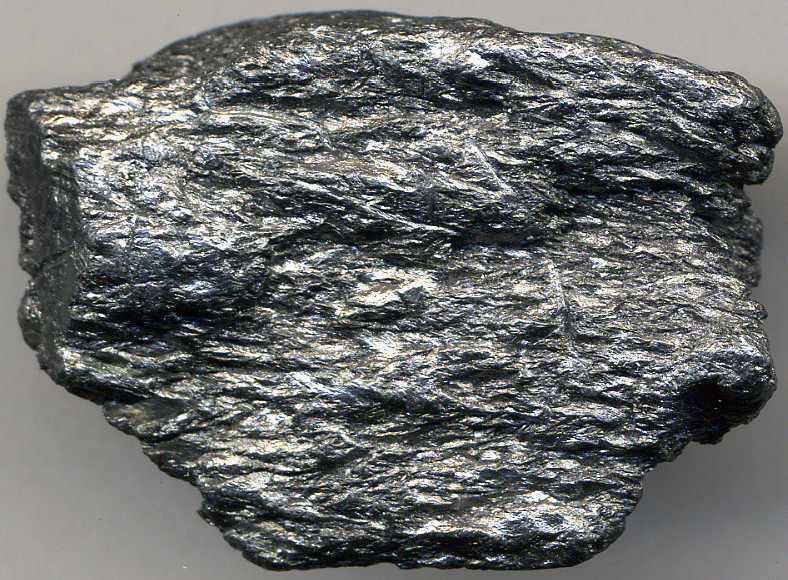Graphite, archaically referred to as plumbago, is a crystalline type of the element carbon with its atoms organized in a very hexagonal structure. It happens naturally during this kind and is the most stable kind of carbon under standard conditions. Under high pressures and temperatures it converts to diamond. Graphite is utilized in pencils and lubricants. It’s a good conductor of heat and electricity. Its high conductivity makes it helpful in electronic product like electrodes, batteries, and solar panels.
The principal types of natural graphite, each occurring in different types of ore deposits, are
- A crystalline small flake of graphite (or flake graphite) occurs as isolated, flat, plate-like particles with hexagonal edges if unbroken. When broken the edges can be irregular or angular;
- Amorphous graphite: very fine flake graphite is sometimes called amorphous;
- Lump graphite (or vein graphite) occurs in fissure veins or fractures and appears as massive platy intergrowths of fibrous or acicular crystalline aggregates, and is probably hydrothermal in origin.
- Highly ordered pyrolytic graphite refers to graphite with an angular spread between the graphite sheets of less than 1°.
- The name “graphite fiber” is sometimes used to refer to carbon fibres or carbon fiber-reinforced polymer.
Graphite occurs in metamorphic rocks as a result of the reduction of sedimentary carbon compounds during metamorphism. It also occurs in igneous rocks and in meteorites. Minerals associated with graphite include quartz, calcite, micas and tourmaline. The principal export sources of mined graphite are in order of tonnage: China, Mexico, Canada, Brazil, and Madagascar.
In meteorites, graphite occurs with troilite and silicate minerals. Small graphitic crystals in meteoritic iron are called cliftonite. Some microscopic grains have distinctive isotopic compositions, indicating that they were formed before the Solar system. They are one of about 12 known types of minerals that predate the Solar System and have also been detected in molecular clouds. These minerals were formed in the ejecta when supernovae exploded or low to intermediate-sized stars expelled their outer envelopes late in their lives. Graphite may be the second or third oldest mineral in the Universe.
Historically, graphite was called black lead or plumbago. Plumbago was commonly used in its massive mineral form. Both of these names arise from confusion with the similar-appearing lead ores, particularly galena. The Latin word for lead, plumbum, gave its name to the English term for this grey metallic-sheened mineral and even to the leadworts or plumbagos, plants with flowers that resemble this colour.
The term black lead usually refers to powdered or processed graphite, matte black in color.
Uses of natural graphite
Natural graphite is mostly used for refractories, batteries, steelmaking, expanded graphite, brake linings, foundry facings and lubricants.
- Refractories
- Batteries
- Steelmaking
- Brake linings
- Foundry facings and lubricants
- Pencils
- Other uses
Natural graphite has found uses in zinc-carbon batteries, electric motor brushes, and various specialized applications. Graphite of various hardness or softness ends up in totally different qualities and tones when used as an artistic medium. Railroads would usually combine powdered graphite with waste oil or linseed oil to make a heat-resistant protective coating for the exposed portions of a steam locomotive’s boiler, like the smoke box or lower a part of the furnace.
A high-quality flake graphite product that closely resembles natural flake graphite may be made up of steelmaking kish. Kish may be a large-volume near-molten waste skimmed from the molten iron feed to a basic oxygen furnace, and consists of a mixture of graphite (precipitated out of the supersaturated iron), lime-rich slag, and a few iron. The iron is recycled on site, leaving a mixture of graphite and slag. The simplest recovery method uses hydraulic classification (which utilizes a flow of water to separate minerals by specific gravity: graphite is light-weight and settles nearly last) to urge a 70th graphite rough concentrate. Leaching this concentrate with hydrochloric acid gives a 95th graphite product with a flake size ranging from 10 meshes down.
We at KERONE have a team of experts to help you with your need for Graphite in various products range from our wide experience.

